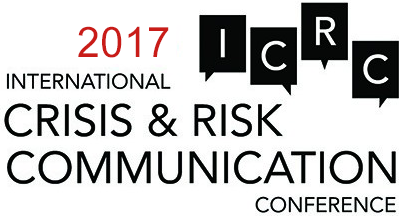
Professor of Media Studies
Bonn University
Germany
Caja Thimm (PhD) Born in Frankfurt/Germany, studies in Munich, Heidelberg, San Francisco and Berkeley (USA), in Linguistics, Political Science, Communication. Since 2001 full professor for Media Studies and Intermediality in Bonn/Germany. Visiting professor in Santa Barbara/US, Cardiff, Liverpool (UK), Dijon (France). Member of the Committee on the Future of the Aging Society (Federal Government of Germany) from 2007-2010; member of the state committee on “Internet Responsibility” (2010-2012). Book publications include eLeaning (2005), Online Marketing (2007), Computer Games (2009), Social Web (2011) and Mobile Media (2014). Various funded research projects, currently (1) “Online Deliberation” , funded by the German Science Foundation since 2010, extended until 2016; (2) “Digital Firestorms in Business and Politics”, funded by the BAPP Foundation; (3) “Twitter in the EU Elections – A comparison between France and Germany”; funded by the German Exchange Agency and the French Procope Program (until 2015).
2015
Digital Firestorms: Dynamics, Responses and Possible Benefits of Online Crisis Management
One of the more recent issues in online organizational communication is the usage of social media for marketing and advertising purposes. On the one hand, social media are a highly beneficial environment for the propagation of new ideas and products, and this has consequently made them a focus of marketing communications. On the other hand, companies and their brands as well as politicians, governmental institutions, and celebrities have increasingly been facing the impact of negative online reactions and complaint behavior. Every single day, brands and companies are challenged to deliver their opinion in the online discourse – often, it is important to constructively accept criticism and find good solutions for the stakeholders’ concerns. But every now and then, emotions won’t be calmed down with factual arguments. One of the subsequent reactions are the so-called “digital firestorms” (or “shitstorms”), which can take on any organisation any time.
Based on the traditional communication mode of “word of mouth” communication, the speed and range of global digital communication has lead to fast, connected and sometimes harmful campaigns, be it against an individual or an organisation. In reaction to any questionable statement or activity, social media users can create huge waves of outrage within just a few hours. During such a social media crisis, feelings run high, and in some cases can’t be stopped with traditional measures of crisis communication. Due to the ubiquity and global reach of social media, particularly Twitter, Facebook and Instagram, a local crisis of an organisation can even turn into a fierce global battle. These digital firestorms pose new challenges for marketing and crisis communications.
The paper wants to explore these dynamics in more detail by taking two approaches. Firstly, selected firestorms will be analyzed with respect to dynamics and outcome; secondly, reactions and methods to deal with the crises are assessed by means of expert interviews, which were conducted with the heads of the communication management of larger companies (like ING Diba, Telecom, or DHL logistics). Based on the detailed analysis of the selected firestorms, which range from large car manufactures to banks or telecommunication and food companies, a model of the communication dynamics was developed. The typology, which can be drawn from the empirical data, shows that is particularly the tip-over-point into the traditional media, which determines the impact of a digital firestorm.
Set in the framework of a larger research project on digital crisis communication and mediatized scandals, the dynamics of the selected digital firestorms are being analyzed by a phase approach. Also selected crisis intervention methods will be demonstrated and evaluated in terms of communicative effectiveness.


